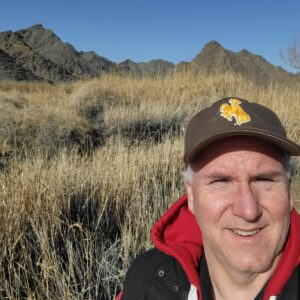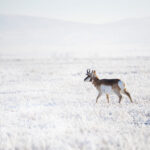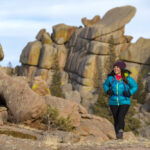The promise of western lands
Perspective by John L. Koprowski
I was a youngster in Cleveland, Ohio, when the Cuyahoga River started on fire…again! After more than a dozen previous ignitions, the images were commonplace on local television: the river’s surface—covered by oil, gasoline, and other volatile products produced by industry and run-off—burning.
I also remember fishing in Lake Erie at ten years old. Before wetting our lines, we had to check the current limit for yellow perch, not to protect the fishery, but to protect ourselves from the high levels of mercury accumulation in the fishes’ tissues.

Such impactful moments as a boy made me long for the western United States, a place I imagined didn’t suffer from these industrial concerns. I read everything I could about wildlife, climbing, backpacking, and fishing. I dreamed of one day visiting, or even being able to live near, wild places like Yellowstone, Grand Canyon, Yosemite, Glacier, Grand Teton, and the working lands in between. Unlike the waterways of my youth, where economic prosperity had been traded for ecological integrity, the western lands I longed for provided early examples of landscapes that integrated conservation alongside prosperity.
Not surprisingly, I chose a career in environmental science, wildlife conservation, and natural resource management, which led me West. Now, I am fortunate to serve as dean of the Haub School of Environment and Natural Resources at the University of Wyoming. As dean, as well as a researcher, I want to find ways to ensure that our western lands are managed so that their natural wealth supports human and environmental well-being.
Now that I’m here, I wear my appreciation for open spaces on my sleeve. The vast rolling grasslands, seemingly endless seas of sagebrush, glowing sunsets in the desert, fall mountain forests of dark conifers and yellow-green aspens, and jagged mountain peaks speckled with alpine meadows and snowfields are postcard images that I and many residents relish. These places draw massive numbers of tourists from across the country and around the world. A love for wild things and wild places unites us. But to live, work, and play in these beloved places, we need sustainable practices that won’t compromise them.
The top economic drivers in most of our western states are intimately tied to natural resources: tourism, mining, energy, and agriculture. These industries generate income, jobs, and tax revenue that provide opportunities for people and communities. If we also value wide open space, a sense of remoteness, and a high quality of life, then sustainable solutions require finding balance. The fulcrum in this balance, the triangle in the middle of the teeter-totter, is the collective values of local communities. We need to engage stakeholders in thoughtful planning and incentivize sustainable approaches.
It’s a challenge. Aldo Leopold provides a path forward, writing, “Examine each question in terms of what is ethically and aesthetically right, as well as what is economically expedient.” Residents of the West have a common connection to the land. We can use that commitment to empower mutually beneficial approaches to living and working with the land. We can make an investment in our future through efforts that are ethically, aesthetically, and economically appropriate. With foresight, we can ensure that many young boys and girls with dreams of wild things and wild places will not be disappointed.
John Koprowski is dean and Wyoming Excellence Chair in the Haub School of Environment and Natural Resources and a professor of Zoology & Physiology at the University of Wyoming. He has spent his 37 years of professional service working to ensure that our wild and working lands continue to function for future generations and has been enjoying them for much longer.


